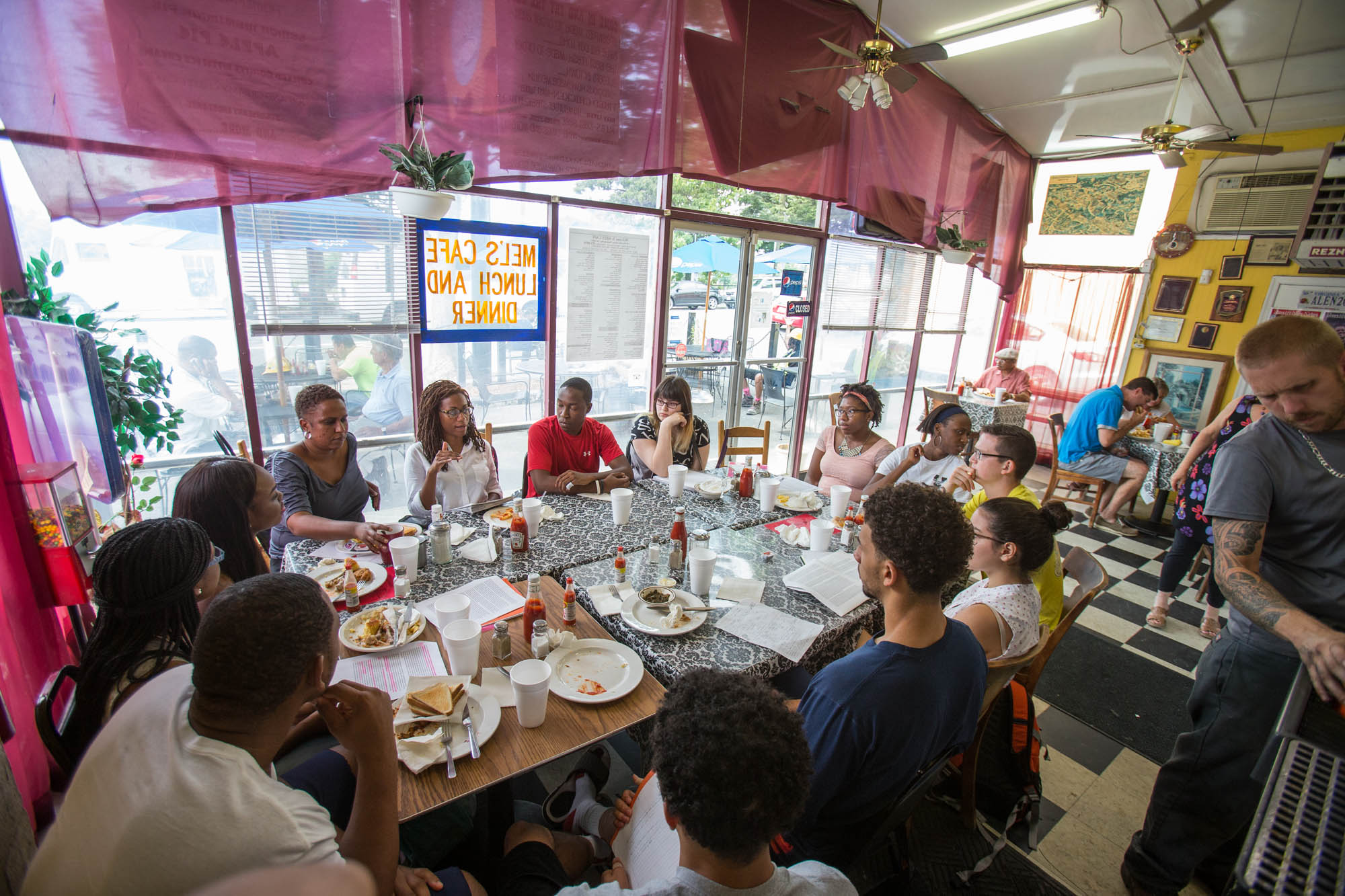On a recent summer day, a dozen or so Charlottesville elementary school children sang a protest song as they marched around the classroom: “We’ll flood the streets with justice/We are freedom bound.” They took turns reading aloud and listening, fidgety but rapt, to a picture book about what life was like for black children like them 50 years ago.
Just as college students from all over the country converged on Mississippi in the summer of 1964 to lead “freedom schools,” several University of Virginia students held workshops in the past few weeks for local African-American children to teach them about civil rights and black heroes, reenacting a bit of Freedom Summer.
Missing, thankfully, was the threat of violence from people who didn’t want anything to change.
The 11 U.Va. students in a course on Freedom Summer delved into the era, going beyond the headlines around key events like the “Mississippi Burning” murders of civil rights activists James Chaney, Andrew Goodman and Michael Schwerner. They learned of deplorable social conditions, cemented by practices such as illegal employment and housing discrimination. They also practiced grassroots activism and community-building and learned about the throngs – black and white, from the North and South -- who put their lives on the line to play a role in the Civil Rights Movement.
Nicole Burrowes and LaTasha Levy, fellows in U.Va.’s Carter G. Woodson Institute for African-American and African Studies, created a “moving” classroom by convening the class in several places important to the local African American community – from Mel’s Diner on Main Street to the Westhaven Community Center to the Jefferson School African American Heritage Center.
During an earlier summer course on civil rights history in Virginia led by Laura Hilton, another Woodson Fellow, students used a mapping program in the U.Va. Library’s digital Scholars’ Lab to document highlights from walking tours of hidden local history. Both courses are part of the Woodson Institute Initiative, “50/5: Remembering the ‘Modern’ Movement for Civil Rights,” which focuses on several 50th anniversaries over the course of five significant years – 1963 through 1968.
Reenacting history, as well as learning about it in the classroom, allowed fourth-year student Arianna Trickey “to essentially combine all of my passions into one (history, education, social justice and helping impoverished groups that I can relate with as a low-income student),” she wrote in an email. An undergraduate history major, she also is pursuing a master’s degree in elementary education in the Curry School of Education.
“The most surprising thing I’ve learned is the focus on the local leaders,” Trickey wrote. “Too much of our understanding about the Freedom Summer is tied to the volunteers coming from all over the country to help with the movement, when the movement really wanted to harness the power of those actually within Mississippi.”
Trickey and fellow students Alexandria Huff-Reynolds, Curtis Falkenstein and O’tillia Roberts worked with Charlottesville’s “City of Promise” program. Modeled loosely after the Harlem Children’s Zone in New York, City of Promise is a collaborative effort of public agencies, nonprofits, public schools and neighborhood residents to make changes that will enable all children get what they need to succeed in school, work and life by “building a cradle-to-college-and-career pathway,” as the program’s website says.
“I had learned about the Freedom Schools and wanted to gain a deeper understanding,” Trickey wrote. “In this class, I’ve appreciated that I’ve been able to learn about the freedom movement and put my understandings to action with the service project.”
Inspired by the course, the four students are planning to start a Saturday Freedom School to continue the City of Promise project during the regular school year.
Students could also choose to work on voter registration, especially explaining the new voter identification law, with the local NAACP.
In the earlier “Mapping Virginia” summer course, students studied key moments from the 1960s: “Massive Resistance,” where schools were closed to prevent having to admit black students; student sit-ins at whites-only lunch counters in Hampton, Portsmouth and Richmond that sought to integrate restaurants; “Bloody Monday” in Danville, a peaceful march that ended in police using billy clubs and fire hoses on the protesters; and students’ efforts to initiate black studies at U.Va.
Using multimedia, both courses emphasized history and events leading up to Freedom Summer and made connections to current conditions.
“In the first week, we had a walking tour of Charlottesville, and we got to see Venable Elementary School and Jefferson High School,” said Caroline Melville, a visiting student from Scotland in the “Mapping Virginia” course. “Actually seeing these points and hearing their stories helped illustrate for me what actually happened, and just how recent segregation had been in not only the country, but also the community.”
By the last week of class, the students conducted their own walking tour and mapped the history of U.Va. in the civil rights era. One of the young women plotted where Martin Luther King Jr. stood as he spoke in Old Cabell Hall auditorium in 1963.
“Standing on this stage ... was really special for me,” Melville said.
Media Contact
Article Information
August 11, 2014
/content/students-follow-footsteps-freedom-summer-50-years-later

